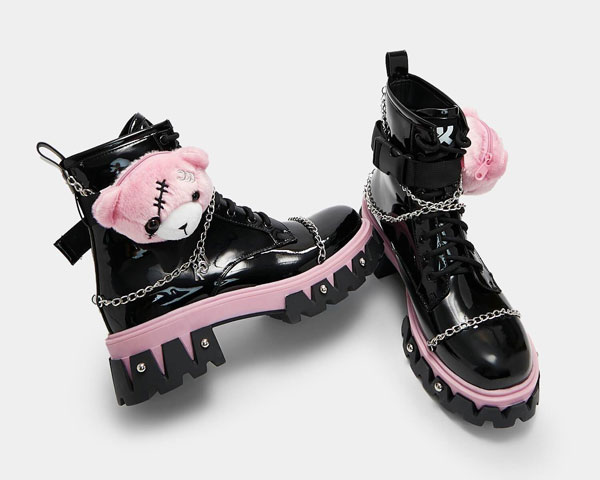Kawaii in Japanese: an Intriguing Exploration Of Cuteness Culture
페이지 정보

본문
Introduction:
Language is an integral a part of tradition, and the Japanese language is famend for its richness in expressing nuanced emotions and ideas. One such concept, deeply ingrained within the Japanese society, is "kawaii." This term, often translated as "cute" in English, goes far past its literal meaning. This scientific article aims to explore the multifaceted dimensions of kawaii in Japanese, shedding light on its linguistic expressions, cultural significance, and societal implications.
Linguistic Expressions:
Within the Japanese language, kawaii can take on varied types, each with its personal distinct connotations. One common utilization is the adjective "kawaii," which is used to explain anything visually appealing or endearing. For instance, one would possibly check with a fluffy teddy bear or a child's smile as "Trendy Kawaii Pink shoes styles." Nevertheless, kawaii will also be expressed through different linguistic gadgets, corresponding to onomatopoeias. Words like "pika-pika" (sparkling) or "mofumofu" (fluffy) evoke a way of kawaii in the minds of Japanese speakers.

Kawaii Tradition and Icons:
Kawaii is deeply ingrained in Japanese standard culture, typically influencing vogue, leisure, and even national mascots. Iconic characters like Hello Kitty, Pikachu, and Doraemon exemplify the kawaii aesthetic and have gained immense reputation both within Japan and internationally. These characters are adorned with broad eyes, rounded options, and vibrant colors, resonating with the concept of kawaii. The ubiquity of such characters reflects the cultural significance of cuteness in Japanese society.
Societal Implications:
Whereas kawaii might sound like a superficial idea, its affect extends effectively beyond aesthetics. In a collectivist society like Japan, the emphasis on kawaii fosters social harmony and promotes a sense of empathy and nurturing. By figuring out with cute characters or objects, people can feel a sense of belonging and emotional consolation, fostering interpersonal connections. The kawaii tradition additionally promotes innocence, purity, and vulnerability, permitting people to embrace their childlike features and escape the stresses of grownup life.
Kawaii as a Gendered Idea:
It is crucial to notice the gendered points of kawaii in Japanese society. Traditionally, the concept has been related extra with feminine characteristics, reinforcing gender stereotypes. The idealized vision of "kawaii" women usually entails youthful and submissive qualities, reflecting conventional gender roles. However, in recent years, there was a shift towards a broader acceptance of kawaii among all genders, enabling men to embrace cuteness with out judgment. This transformation challenges societal norms and showcases the evolving nature of kawaii in contemporary Japan.
Kawaii in International Popularity:
Kawaii's enchantment has transcended borders and gained immense recognition internationally. The global fascination with kawaii has led to the adoption of cute aesthetics in various contexts, akin to fashion, art, music, and even social media developments. This cross-cultural appreciation of kawaii highlights the universal need for joy, innocence, and aesthetic pleasure. In a world often overwhelmed by seriousness and stress, kawaii offers an escape and a form of expression that resonates with people from various backgrounds.
Conclusion:
Kawaii in Japanese is way greater than a simple translation of cuteness into English. It represents a complex blend of linguistic expressions, cultural significance, and societal implications. From shaping language and in style tradition to fostering social connections and challenging gender norms, kawaii plays a big position in Japanese society and has discovered a worldwide appeal. Further research on kawaii can assist us higher perceive the nuances of culture, language, and human feelings, contributing to a extra complete understanding of the interplay between language and society.
- 이전글The 10 Most Terrifying Things About Triple Pushchair 24.06.02
- 다음글Why The Motor Vehicle Lawsuit Is Beneficial During COVID-19 24.06.02
댓글목록
등록된 댓글이 없습니다.
